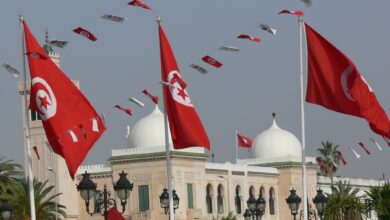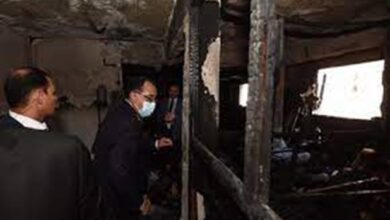“The powers that be want us to be passive observers. And they haven't given us any other options outside the occasional, purely symbolic, participatory act of voting. You want the puppet on the right or the puppet on the left?” The young man utters these words angrily as he sits cross-legged on the sidewalk and douses himself with gasoline. “I feel that the time has come to project my own inadequacies and dissatisfactions into the sociopolitical and scientific schemes. Let my own lack of a voice be heard.” He lights a match and sets his body ablaze.
This is perhaps the most jarring scene from the exceptionally creative animated film Waking Life by Richard Linklater, which offers a series of dizzyingly profound yet disconnected diatribes delivered by various characters speaking to a confused yet curious semi-conscious protagonist. This particular interaction is with the philosophical prototype of the self-destructive man. The self-immolator describes this state as “completely alienated and utterly alone.” He is essentially “an outsider to the human community.”
We have no qualms about condemning all those who inflict harm on the bodies of others or decimate their lives. Tyrannical regimes that fire live ammunition into the disgruntled unarmed bodies of demonstrators–whether they be Ben Ali’s police force, the Thai government’s security apparatus against the Red Shirts or the Israeli Defense Forces against Palestinians–often appear to have lost their moral compass entirely in the eyes of outraged populaces. Other institutions will subject the human corpus to unspeakable horror in the most abhorrent manner to arrive at one end–complete submission. These are the institutions that leave behind long trails of victims–the likes of Khaled Saeed and more recently Sayed Belal, who appears to have died in custody after sustaining severe injuries during a session of torturous police interrogations following the Alexandria church bombings.
In every case, it is the strong hand of the “law” rehabilitating individuals into tacit acceptance of the way things are and into vowing complete cooperation. But in some instances, the shaky unsure hand that holds aloft the baton comes down too hard, crossing a very thin line and forcing a new relationship between the powerful and the powerless. With the final mortal breath, the victim is immediately transformed into the victor, and the omnipotent is rendered impotent. Recently, we have witnessed how a single foolish act which cost the life of young man Khaled Saeed has spurred a movement in Egypt against torture and corruption. Once completely unknown to his fellow Egyptians, in death Saeed’s name has become a rallying cry. And while his body is no longer among us, his two dimensional image now possesses political capital, and his posthumous page has more supporters on Facebook than all Egyptian political figures combined.
Tunisian graduate and unlicensed vegetable vendor Mohamed Bouazizi joined the ranks of the few who self-immolated out of helplessness and anguish in what could have been a local incident. Bouazizi’s action was a genuinely epic David vs. Goliath scenario, where David liberated himself from the fear of persecution by decimating himself and laying Tunisia’s corrupt and authoritarian political order naked for onlookers to see. The camouflage of power had been rendered obsolete and the injustice of the status quo was no longer unspoken.
We know that suicide today is one of the many ailments of our modern age. Hundreds of thousands of people from all walks of life in all societies, classes and races decide to terminate their lives against all legal, social and ethical norms. Principles and ideologies that look upon these actions favorably are often ostracized by mainstream society almost everywhere. Nevertheless, this admonishment does not take away from the fascination with what appears to be the most self-less act the human mind can conjure.
The body is the canvas on which we carve our identities. From prayer bumps on the forehead to Coptic crosses on the wrist, from the way we adorn it with accessories to what we choose to feed it or withhold from it. We reward and punish our bodies with frills and thrills. And while we largely believe it is our own to tamper with, a body in no small measure is also claimed by those who comes into contact with it. Religious doctrine and social custom dictate how the body should be displayed and used, and we choose whether to conform to or revolt against these norms.
The body is also an important symbol of protestation. One cannot underestimate the power of disfigured bodies to create outrage. Videos and images of Tunisian protesters’ bullet-holed bodies and open skulls ignited more demonstrations. The photo of Khaled Saeed’s contorted and sutured face alone created a firestorm in Egypt and kickstarted a movement.
And while the precedent has been set in Tunisia, and everyone stands still waiting for the quake to ripple elsewhere, there is no dearth of heroes prepared to be martyrs, desperate to taste a life of dignity. The half dozen people who have attempted to self-immolate and follow in the footsteps of Bouazizi in the hope that their brethren can lead better lives, may be called copy cats, but their plight is one.
As discussions reverberate worldwide on the nature of revolution in the wake of Tunisia, enthusiasts and skeptics stake their odds. Social psychologists will debate political scientists and anthropologists will argue with media scholars about the peculiarities of the Tunisian phenomenon. They will contest what compels someone to self-mutilate, destroy their own body or inflict unbearable pain on themselves with intent and design. They will argue why day in and day out thousands of protesters knowingly confronted a force that was prepared to murder them. They will argue every miniscule detail in the months and years to come. But they will all agree on one point–that the complicated arithmetic of revolution is actually a very straightforward equation. In societies where tyranny reigns supreme and does so with unimaginative blatancy, change is merely a question of will. The will to undertake a single political act of the body that can ignite a nation’s body politic.
But first Arab publics must overcome their desensitization to human loss, their tacit acceptance of the pain of others and their discrediting of those who sacrifice where they barely budge. They must go beyond uttering “ooohs” and “aaahs” at news of others’ sacrifices. Change is not a spectator sport that one buys tickets to watch. Arab publics must go beyond their necrophilia which has left them enslaved voyeurs in their own lives, insatiably drawn to the agony of others. Rather than being captivated by the body counts on Al-Jazeera tickers, they should make their own bodies count. Not by setting their bodies ablaze but rather by being prepared to respond to the call of the body politic.
Adel Iskandar is a media scholar and lecturer at Georgetown University. His column appears every other Thursday.




